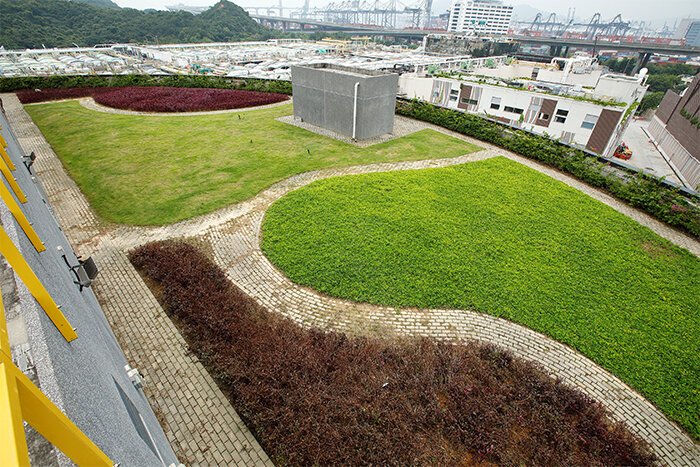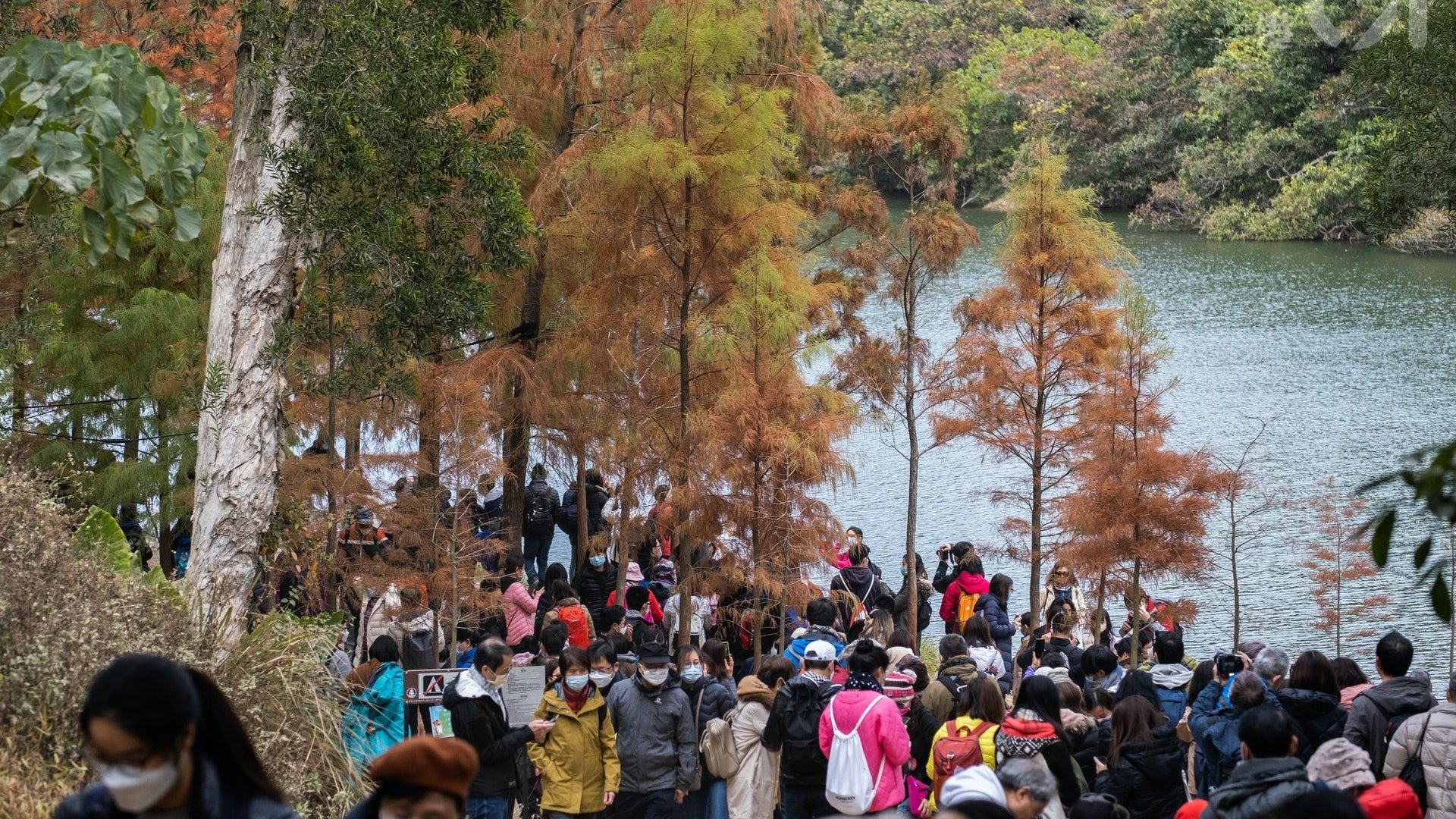海綿城巿:香港雨水,何時不再倒進鹹水海?|Hong Kong as a Sponge: put rainwater into better use





全球暖化之下,香港的降雨模式將出現重大改變。暴雨帶來水浸的危機,吉人要思考如何加強排洪之外,亦要處理降雨量減少,帶來土地乾旱的問題。面對極端天氣,香港其實準備好未?
自開埠以來,香港為了控制嚴重的水浸問題,雨水排放系統側重於地面與地下渠道網絡、疏導洪水,將雨水收集,然後統一排走;換句話說,除了有部分雨水透過集水區流入水塘成為食水,其他雨水則經雨水渠排出大海。這些集水區,總面積約佔香港三成土地,每年水塘儲水量平均約1億至3億立方米,若以香港每日用水量273萬立方米計算,水塘食水只夠全香港人用4個月 —— 看到這裏,你會否很驚訝:把珍貴的雨水倒進鹹水海,實在太大嘥了﹗
正當全球不少國家在十多年前已開始發展「海綿城巿」,利用花槽、綠化屋頂、滲水路面等方法吸納雨水、善用水資源,香港在數年前似乎嘗試急起直追:2015年,《施政報告》提出推廣「親水文化」,當中包括河道改善工程,目的除了有助排洪,亦顧及美化和生態多元。及後,渠務署發表《可持續發展報告2016-17》,首次直接以「海綿城巿」為題,解釋香港近年已開始建設蓄洪池、綠化天台及多孔透水路面等。
在眾多措施之中,香港做得比較成功的,大概是建造地下蓄洪池。現時,香港共有三個蓄洪池,分別位於大坑東、上環,以及政府最常提到的「跑馬地地下蓄洪池」,自2017年開始收集雨水,除了在暴雨期間減少排水管的壓力,並儲起雨水供運動場灌溉樹木花草和沖廁之用。不過,單靠蓄洪池並不足以解決問題,還需要城巿中不同地方發揮「吸水」功能,才能讓香港成為真正的「海綿城巿」。
有人會問,香港不是也有綠化天台嗎?沒錯,香港政府在2001年嘗試在公共建築物,引入綠化設計,包括天台花園。但有學者指出,香港的綠化天台,大多只作美觀之用,厚度和吸水能力不夠,對幫助整個城巿吸收雨水效用不大。至於多孔路面,香港道路早在1990年代開始採用多孔物料鋪路,不過主要為減少汽車噪音而沒有透水功能;直至2016年分階段開展工程的東九龍安達臣道石礦場發展項目,才首度引入「滲水路磚」改善雨水滲透。
要建設「海綿城巿」並不容易,尤其要在已發展和人口密集的城巿,更是困難。香港才剛起步,除了靠政府做好規劃,更需要吉人合力,推動香港成為一個更宜居城巿﹗
相片來源:網上圖片、 渠務署
地點:香港
Hong Kong as a Sponge: put rainwater into better use
‘Do not just flush us into the sea please’, murmured the raindrops, ‘We are precious water resources that could help mitigate extreme weather!’. To control flooding, Hong Kong’s rainwater drainage system has long focused on connecting on ground and underground pipe networks to drain floods and discharge them altogether. This means that Hong Kong is currently flushing large amounts of rainwater to the sea during rainy seasons, as only a small portion of the rainwater that fall into reservoir catchment areas are collected in the reservoirs and transformed into drinking water. With an average of 100 -300 billion m3 of water reserve in the reservoirs per year, it is barely enough to support Hong Kong’s water consumption for 4 months. To better adapt to climate crisis, it is time for GUTMANS to cut the waste and put rainwater to a better use!
Established cities around the world have started to transform themselves into Sponge Cities more than a decade ago. They fully utilized flower troughs, green roofs, permeable pavements to absorb and reuse rainwater to mitigate extreme weather conditions brought about by climate change. Is Hong Kong also well-prepared for such? Though a little lagging behind, Hong Kong’s Drainage Services Department seem to be catching up a few years ago. In the 2015 Policy Address, the idea of a "water-friendly culture" was first introduced, which included revitalization of water bodies and river channel improvement projects. The Drainage Services Department also issued a Sustainability Report in 2016-17 with Sponge City as a theme, explaining how Hong Kong has started developing water infrastructure such as flood storage ponds, green roofs, permeable pavement etc.
The flood storage system collects underground water and rainwater for recycling. In Hong Kong, this system is highly effective and is being carried out through 3 underground flood storage tanks situated in Tai Hang Tung, Sheung Wan, and Happy Valley. The Happy Valley storage tank, in service since 2017, is being frequently quoted by the authority as a successful story. It collects water from rainstorms and reuse it for irrigating the sport pitches, watering plants and toilet flushing. However, flood storage tanks alone are not enough to solve the problem. Different parts of the city also need to “absorb" to make Hong Kong a true "sponge city."
Despite having an effective flood storage system, Hong Kong needs more work in developing green roofs and permeable pavement. Rooftop garden in public buildings, a policy pushed forward by the government in 2001, is described by the experts as merely a decoration as both thickness and rate of absorption is far from ideal. For permeable pavement, Hong Kong used porous materials as early as 1990s for the purpose of reducing noise. The ‘real’ permeable pavement to improve filtration is not put to use until 2016, in the East Kowloon Anderson Road Quarry (ARQ) Project.
It is a long road to evolve from a well-established and dense city to a Sponge city. Besides having the government to push forward related planning, Hong Kong needs more GUTSMAN to come in solidarity and build a livable and a fully functioned, more livable Sponge City together!
Photo source: Internet, Drainage Services Department
Location: Hong Kong
你可能對以下吉人吉事有興趣:
You may also be interested in these GUTS Stories:












